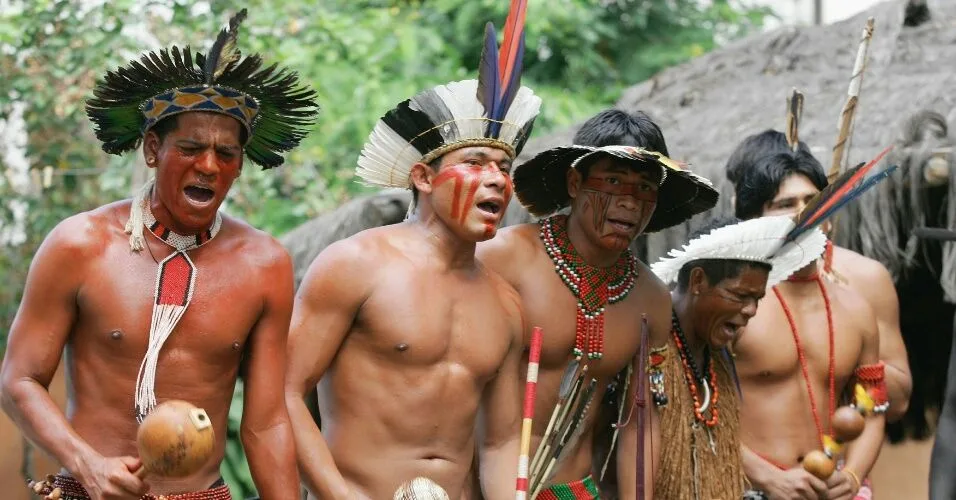Throughout human history, ancient stories have served as vessels carrying profound wisdom across generations. These timeless narratives continue to shape our understanding of existence, morality, and the human condition in ways that transcend cultural and temporal boundaries.
The sacred tapestry of time weaves together mythologies, parables, and epic tales from civilizations long past, creating a rich mosaic of human experience. These narratives, passed down through oral traditions and sacred texts, form the foundation of our collective consciousness and continue to resonate with contemporary audiences seeking meaning and connection in an increasingly fragmented world.
🌟 The Eternal Echo: Why Ancient Stories Still Matter
Ancient narratives possess a remarkable quality that distinguishes them from contemporary storytelling: their ability to speak across millennia with undiminished relevance. These stories emerged from societies vastly different from our own, yet they address fundamental questions that remain unchanged—questions about identity, purpose, love, loss, and the search for meaning.
The power of these timeless narratives lies not in their historical accuracy but in their psychological and spiritual truth. When we encounter the Epic of Gilgamesh, the Bhagavad Gita, Greek tragedies, or Indigenous creation myths, we’re not merely studying ancient literature; we’re engaging with archetypal patterns that reflect universal human experiences.
Modern psychology, particularly the work of Carl Jung, has illuminated how these ancient stories tap into the collective unconscious—a shared reservoir of symbols, patterns, and themes that transcend individual cultures. The hero’s journey, the wise mentor, the shadow self, and the quest for transformation appear repeatedly across diverse mythological traditions, suggesting deep-rooted psychological truths encoded within these narratives.
📜 Sacred Texts as Living Documents
Religious and spiritual traditions worldwide have preserved ancient stories as sacred texts, treating them not as static historical documents but as living wisdom that evolves in interpretation while maintaining core truths. The Bible, the Quran, the Vedas, the Tao Te Ching, and Buddhist sutras continue to guide billions of people, demonstrating the enduring power of ancient narrative wisdom.
These sacred texts function on multiple levels simultaneously. They operate as historical records, moral guidebooks, spiritual instruction manuals, and poetic expressions of transcendent experience. Their multilayered nature allows each generation to discover new meanings while remaining anchored to foundational principles.
The Interpretive Tradition
What keeps ancient stories alive is not merely their preservation but the continuous process of interpretation and reinterpretation. Jewish midrash, Islamic tafsir, Christian hermeneutics, and Hindu commentary traditions demonstrate how sacred communities engage dynamically with ancestral narratives, extracting contemporary relevance from ancient wisdom.
This interpretive flexibility ensures that ancient stories remain responsive to changing cultural contexts without losing their essential character. A parable that addressed agricultural society’s concerns can illuminate challenges in digital culture because its underlying wisdom operates at a deeper level than surface circumstances.
🌍 Cross-Cultural Narrative Patterns
Comparative mythology reveals striking similarities among stories from cultures with no historical contact. The flood narrative appears in Mesopotamian, Hebrew, Hindu, Chinese, and Native American traditions. Creation stories worldwide share common structural elements. Dying and rising god myths emerge independently across continents.
These parallels suggest that ancient stories arise from shared human experiences and cognitive structures rather than simple cultural diffusion. They reflect universal aspects of human consciousness confronting existence’s mysteries—birth, death, nature’s cycles, good versus evil, and the relationship between mortal and divine.
The Hero’s Journey as Universal Template
Joseph Campbell’s identification of the monomyth—the hero’s journey—demonstrates how a single narrative pattern underlies countless ancient stories. From Odysseus to Buddha, from Moses to Quetzalcoatl, heroes follow remarkably similar paths: departure from the ordinary world, initiation through trials, and return with transformative wisdom.
This pattern persists because it mirrors the psychological journey every individual undertakes toward self-realization. Ancient storytellers, whether consciously or intuitively, encoded the transformation process into narrative form, creating templates that continue to guide personal and collective growth.
💫 Mythological Time Versus Chronological Time
Ancient stories operate in a different temporal dimension than historical narratives. Mircea Eliade distinguished between “profane time”—the linear, chronological time of daily life—and “sacred time”—the eternal present where mythological events occur and recur.
When religious communities ritually reenact ancient stories through ceremony and celebration, they’re not merely commemorating past events but participating in eternal realities. The Passover Seder, the Eucharist, the Hajj, and countless other ritual observances transport participants into mythological time, where past, present, and future converge.
This understanding of time allows ancient stories to remain perpetually contemporary. The creation isn’t something that happened once in the distant past; it’s an ongoing process. The hero’s journey isn’t a completed historical event; it’s a pattern continuously manifesting in individual lives.
📚 Ancient Wisdom in Modern Storytelling
Contemporary culture continues drawing deeply from ancient narrative wells. Modern literature, film, television, and digital media constantly recycle and reinvent archetypal stories, demonstrating their inexhaustible creative potential.
Star Wars consciously employed Campbell’s hero’s journey framework. The Lord of the Rings drew extensively from Norse and Celtic mythology. Harry Potter echoes alchemical transformation narratives. Superhero stories resurrect ancient god myths for contemporary audiences. Even seemingly secular modern narratives often rest on ancient mythological foundations.
The Danger of Surface Appropriation
While ancient stories continue inspiring modern creativity, superficial appropriation risks losing the depth that gives these narratives their transformative power. When mythological elements become merely aesthetic choices rather than meaningful symbolic systems, their capacity to generate wisdom diminishes.
Authentic engagement with ancient stories requires more than borrowing their surface features. It demands wrestling with their deeper meanings, respecting their cultural contexts, and allowing them to challenge contemporary assumptions rather than simply confirming existing beliefs.
🧘 Transformative Power of Narrative Wisdom
Ancient stories don’t merely entertain or inform; they transform those who genuinely engage with them. This transformative capacity distinguishes sacred narrative from ordinary storytelling. The goal isn’t intellectual understanding alone but existential reorientation—a fundamental shift in how one perceives reality and one’s place within it.
Traditional societies understood this power, embedding stories within initiatory contexts. Tales weren’t casually consumed but ceremonially transmitted at appropriate life stages, preparing individuals for developmental transitions. The stories provided maps for navigating psychological and spiritual territory.
Personal Application of Ancient Wisdom
Applying ancient narrative wisdom to contemporary life requires active interpretation rather than passive consumption. It involves asking: What does this story reveal about my situation? Which character or element reflects my current challenge? What transformation is this narrative inviting me toward?
This approach treats ancient stories as mirrors reflecting inner realities rather than windows into distant historical periods. The external adventures of mythological heroes become metaphors for internal psychological journeys that every person undertakes.
🌱 Ecological Wisdom in Ancient Narratives
Many ancient stories contain sophisticated ecological wisdom increasingly relevant as humanity confronts environmental crises. Indigenous creation stories often emphasize humanity’s kinship with nature rather than dominion over it. Ancient agricultural myths encode sustainable relationship patterns with the land.
These narratives present alternatives to dominant modern paradigms that separate humanity from nature. They suggest ways of being in reciprocal relationship with the natural world, treating Earth as sacred rather than as mere resource. As ecological consciousness deepens, these ancient perspectives offer crucial guidance.
Seasonal Cycles and Natural Rhythms
Ancient stories frequently align with seasonal cycles and natural rhythms, embedding communities within larger temporal and ecological patterns. Harvest festivals, solstice celebrations, and seasonal myths connected human communities to Earth’s cycles, fostering attunement to natural processes.
Modern disconnection from these rhythms contributes to psychological and spiritual disorientation. Recovering ancient narrative traditions that honor seasonal and natural cycles may support more integrated ways of living within Earth’s systems.
🔮 Prophecy and Future-Oriented Wisdom
Ancient stories don’t only preserve past wisdom; many contain future-oriented elements—prophecies, visions, and warnings about consequences of particular choices. These predictive dimensions reflect deep pattern recognition rather than supernatural foreknowledge.
Prophetic narratives identify recurring patterns in human behavior and project their likely outcomes. When ancient texts warn about pride, greed, violence, or environmental exploitation leading to disaster, they’re not predicting specific future events but recognizing timeless cause-and-effect relationships.
This prophetic quality makes ancient stories remarkably prescient. Their warnings about empire’s fragility, wealth’s corrupting influence, and humanity’s capacity for self-destruction remain urgently relevant, offering guidance for navigating contemporary challenges.
🎭 Ritual Enactment and Embodied Knowledge
Ancient communities didn’t merely tell stories; they enacted them through ritual, ceremony, and sacred drama. This embodied engagement created experiential knowledge distinct from intellectual understanding. Participants didn’t just learn about transformation; they underwent it through ritual participation.
Modern culture’s predominantly textual and intellectual approach to ancient stories may miss dimensions accessible only through embodied practice. Sacred dance, ceremonial reenactment, pilgrimage, and ritual observance open experiential pathways to narrative wisdom that reading alone cannot provide.
🌉 Bridging Ancient and Modern Consciousness
Successfully integrating ancient narrative wisdom into modern life requires bridging different modes of consciousness. Ancient stories emerged from cultures that experienced reality differently—more symbolically, mythologically, and holistically than modern rational-scientific consciousness typically allows.
This doesn’t mean rejecting modern critical thinking but rather developing cognitive flexibility that can shift between analytical and symbolic modes. It means recovering capacities for metaphorical thinking, symbolic perception, and mythological imagination without abandoning discernment and critical reasoning.
The Challenge of Translation
Every engagement with ancient stories involves translation—not merely linguistic but conceptual and cultural. Terms, concepts, and worldviews from ancient contexts don’t map neatly onto modern frameworks. This translation challenge requires humility, recognizing that some dimensions of ancient wisdom may remain partially inaccessible to modern consciousness.
Yet this very difficulty creates productive tension, forcing engagement with alternative ways of understanding reality. Ancient stories challenge modern assumptions precisely because they emerge from different consciousness structures, offering perspectives that expand rather than confirm existing worldviews.
💎 The Inexhaustible Depth of Sacred Stories
A defining characteristic of genuinely sacred stories is their inexhaustible depth. Unlike simple narratives that yield their meanings readily and completely, ancient sacred stories reveal new dimensions with each encounter. They grow richer rather than stale with familiarity, offering fresh insights at different life stages and changing circumstances.
This inexhaustibility stems from their multilayered symbolic structure. Sacred stories operate simultaneously on literal, metaphorical, moral, and mystical levels. They address individual psychology, collective society, cosmic order, and spiritual reality concurrently, creating complex meaning matrices that reward sustained contemplation.
Scholars, mystics, and ordinary seekers have spent lifetimes exploring single sacred texts or stories without exhausting their significance. This depth distinguishes timeless narratives from ephemeral entertainment, marking them as vessels containing concentrated wisdom accumulated across generations.
🌟 Renewing Ancient Wisdom for Contemporary Times
The challenge facing contemporary culture isn’t merely preserving ancient stories but actively renewing their wisdom for current contexts. This requires creative fidelity—remaining faithful to core truths while expressing them in forms accessible to modern consciousness.
Artists, spiritual teachers, scholars, and storytellers serve as bridges, translating ancient wisdom into contemporary idioms. Their work ensures that timeless narratives don’t become museum pieces but remain living sources of guidance, inspiration, and transformation.
Ultimately, the sacred tapestry of time continues weaving forward, incorporating new threads while maintaining patterns established millennia ago. Ancient stories remain timeless not through static preservation but through dynamic engagement—each generation discovering anew the profound wisdom encoded within narratives that have guided humanity’s journey through the ages. These stories remind us that we belong to something larger than our individual lives or historical moment, connecting us to an eternal conversation about what it means to be human, to seek meaning, and to participate in the ongoing creation of reality itself.
Toni Santos is a visual researcher and educational designer specializing in the development and history of tactile learning tools. Through a hands-on and sensory-focused lens, Toni investigates how physical objects and textures can enhance understanding, memory, and creativity while exploring the intersections of ancient temporal systems, ritualized time practices, and cultural perceptions of chronology. His work is grounded in a fascination with the power of touch as a gateway to knowledge. From embossed maps and textured alphabets to handcrafted manipulatives and sensory kits, Toni uncovers the subtle ways tactile tools shape cognitive development and learning experiences, while engaging with ancestral calendars and forgotten systems, chrono-rituals and time portals, cultural time perception and myth, and devices and tools of time. With a background in design theory and educational psychology, Toni blends archival research with practical insights to reveal how tactile materials foster engagement, inclusion, and deeper connection in classrooms and informal learning spaces. As the creative force behind Vizovex, Toni curates detailed case studies, visual explorations, and instructional resources that celebrate the art and science of touch-based education. His work is a tribute to: The transformative role of tactile tools in learning The intersection of sensory experience, cognition, and temporal wisdom The craft and innovation behind educational objects and time devices Whether you’re an educator, designer, or lifelong learner, Toni invites you to explore the rich textures of knowledge—one touch, one tool, one discovery at a time.




